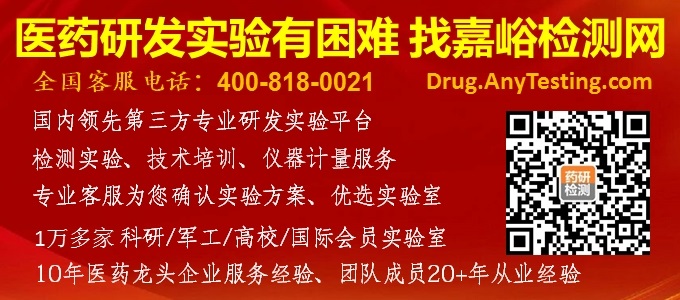嘉峪检测网 2025-06-18 19:41
导读:本文详细介绍了《Updates on the Finalized System Suitability Standards Proposal from USP for the analysis of Organic Extractables & Leachables》内容。
由Smithers主办的第八届E&L亚洲年会将于2025年6月26-27日在新加坡举行。在年会召开之前,Smithers采访了 USP 药物科学通则与复杂仿制药部门总监 Prabhakar Reddy 博士以及高级首席科学家 Ravi Kiran Kaja 博士,提前了解他们即将在大会上联合分享的演讲内容——《Updates on the Finalized System Suitability Standards Proposal from USP for the analysis of Organic Extractables & Leachables》。详细问答如下,请以英文为准,中文翻译仅供参考。
Questions 提问 &Answers 解答
Q1: Why is this message particularly critical for industry professionals to hear right now?
这条信息为何对于行业专业人士而言在当下尤为重要?
A1: Currently, there are no compendial or regulatory system suitability standards specifically designed for Extractables and Leachables (E&L) screening studies. This gap has led to inconsistencies in data quality, method performance, and regulatory compliance across laboratories worldwide. Given the complexity of analytical platforms like GC-MS and LC-MS, ensuring that instruments are functioning optimally before screening is essential. Without standardized system suitability checks, critical compounds may go undetected—posing potential safety risks to patients.
目前,并没有专门为提取物和浸出物(E&L) 筛选研究设计的药典或法规系统适用性标准。这一缺失导致全球实验室之间的数据质量、方法性能和法规合规性存在不一致性。鉴于像GC-MS 和 LC-MS 这样的分析平台的复杂性,在筛选之前确保仪器正常运作是至关重要的。没有标准化的系统适用性检查,关键化合物可能会未被检测到——这对患者构成潜在的安全风险。
Recognizing this need, USP initiated a global effort in 2021 to develop robust, scientifically justified system suitability standards. This initiative was strongly supported by stakeholders through multiple surveys and culminated in a comprehensive round robin study involving 15+ global labs. The finalized set of standards now includes chemically diverse mixtures tailored for key analytical methods (Direct and Headspace GC-MS, LC-MS with ESI and APCI), with compounds selected to assess sensitivity, specificity, linearity, and chromatographic performance.
鉴于这一需求,美国药典委员会(USP) 于2021年发起了一项全球性努力,以制定强有力且科学合理的系统适用性标准。该倡议得到了利益相关者的大力支持,经过多次调查,最终在包括超过15个全球实验室的综合循环试验中圆满完成。最终制定的标准包括专为关键分析方法(直接和顶空GC-MS、带ESI和APCI的LC-MS)量身定制的化学多样化混合物,这些化合物被选用来评估灵敏度、特异性、线性和色谱性能。
This message is especially timely as USP prepares to publish a second stimuli article and considers integrating these standards into General Chapter <1663>. For industry professionals, adopting these standards will not only enhance confidence in E&L data but also support global harmonization, regulatory acceptance, and ultimately, patient safety.
这条信息尤其及时,因为美国药典委员会(USP) 正准备发布第二篇刺激性文章,并考虑将这些标准整合到章节<1663> 中。对于行业专业人士来说,采用这些标准不仅会提升对E&L 数据的信心,还将支持全球协调、法规认可,并最终保障患者安全。
Q2: With evolving guidelines like USP <1663> and ICH Q3E, how do you foresee the regulatory landscape for E&L testing changing in the short future?
随着 USP <1663> 和 ICH Q3E 等指导原则的发展,您如何预见 E&L 测试的法规环境在不久的将来会发生怎样的变化?
A2: The regulatory landscape for E&L testing is on the cusp of significant transformation. While ICH Q3E is still under development, its eventual release is expected to bring global alignment and clarity to extractables and leachables testing and reporting, especially for complex drug products and delivery systems. In parallel, USP has proactively engaged the global scientific community through a comprehensive stakeholder survey to evaluate the relevance and scope of its current chapters, <1663> and <1664>. The feedback was clear: there is a strong demand to modernize these chapters to reflect recent scientific advances and to broaden their applicability to emerging modalities and complex materials.
E&L 测试的法规环境正处于重大变革的边缘。虽然ICH Q3E 仍在开发中,但其最终发布预计将带来全球一致性和明确性,特别是在复杂药物产品和递送系统的提取物和浸出物测试及报告方面。与此同时,USP积极通过全面的利益相关者调查,与全球科学界合作,以评估其当前章节<1663> 和<1664> 的相关性和范围。反馈意见明确:迫切需要对这些章节进行现代化改造,以反映最新的科学进展,并扩大其在新兴模式和复杂材料方面的适用性。
In response, USP plans to initiate a major revision of these chapters starting in early 2026, following the formation of a new expert committee as part of the next revision cycle. These updates are expected to integrate new system suitability standards, address complex product categories, and align more closely with evolving international expectations.
作为回应,USP 计划在2026年初启动这些章节的重大修订,这将由新的专家委员会在下一次修订周期中进行。这些更新预计将整合新的系统适用性标准,解决复杂产品类别问题,并更紧密地与不断发展的国际期望保持一致。
In short, we are entering a pivotal era where harmonized, science-driven standards will elevate consistency, reliability, and regulatory confidence in E&L testing worldwide.
简而言之,我们正进入一个关键时期,其中和谐的、科学驱动的标准将提升全球E&L 测试的一致性、可靠性和法规信心。
Q3: In resource-limited settings, how can companies prioritize E&L testing without compromising compliance?
在资源有限的环境中,公司如何优先考虑E&L测试而不影响合规性?
A3: In environments where resources are constrained, maintaining compliance with E&L testing can be particularly challenging, but not impossible. USP’s proposed system suitability standards are designed to be practical, reproducible, and globally applicable, helping laboratories of all sizes ensure their analytical systems are functioning correctly before screening begins. These standards offer a cost-effective way to verify method performance without the need for extensive in-house development.
在资源受限的环境中,保持对E&L测试的合规性确实具有挑战性,但并非不可能。USP提出的系统适用性标准旨在实用、可重复并具有全球适用性,帮助各类规模的实验室在筛选开始前确保其分析系统正常运作。这些标准提供了一种经济有效的方法来验证方法性能,而无需进行广泛的内部开发。
Moreover, USP is expanding its suite of General Chapters to include targeted guidance for leachable assessments across a range of dosage forms—including oral, ophthalmic, parenteral, topical, and transdermal products. These upcoming chapters, along with associated analytical reference materials (ARMs), will provide scientifically validated tools and methods that can streamline testing and reduce the burden on individual labs to develop their own protocols from scratch.
此外,USP正在扩展其一般章节,以涵盖范围广泛的剂型——包括口服、眼用、注射、局部和透皮产品的浸出物评估,从而提供针对性指导。这些即将发布的章节以及相关的分析参考材料(ARMs)将提供科学验证的工具和方法,可以简化测试过程,并减少单个实验室从头开发其自身协议的负担。
By leveraging USP’s standardized tools and evolving guidance, even resource-limited labs can uphold high standards of quality and compliance—ensuring patient safety without overextending operational capacity.
通过利用USP的标准化工具和不断发展的指导,即使是资源有限的实验室也能保持高质量和合规标准——从而在确保患者安全的同时,不会超出运营能力。
Q4: How does the shift toward sustainable/biodegradable packaging materials complicate E&L profiling?
向可持续/可生物降解包装材料的转变如何使E&L分析复杂化?
A4: The transition to sustainable and biodegradable packaging materials introduces a new layer of complexity to extractables and leachables (E&L) profiling. While adoption in the pharmaceutical and biopharmaceutical sectors is still limited, the momentum is growing driven by environmental responsibility and regulatory encouragement. However, these novel materials often have less well-characterized chemical compositions and degradation pathways compared to traditional polymers.
向可持续和可生物降解包装材料的过渡为提取物和浸出物(E&L)分析引入了新的复杂层次。尽管在制药和生物制药领域的应用仍然有限,但随着环境责任和监管鼓励的推动,这一趋势正在增长。然而,与传统聚合物相比,这些新型材料往往具有较少的已知化学成分和降解途径。
This lack of historical data and standardized testing protocols makes it challenging to predict and assess potential leachables, especially under various storage and stress conditions. As these materials become more prevalent, the industry will need to develop new analytical strategies and expand existing guidance to ensure patient safety is not compromised.
缺乏历史数据和标准化测试协议使得在各种储存和应力条件下预测和评估潜在的浸出物变得具有挑战性。随着这些材料的日益普及,行业将需要开发新的分析策略并扩展现有的指导方针,以确保不损害患者安全。
In essence, the push for sustainability must be matched with scientific rigor—requiring proactive research, method development, and regulatory collaboration to ensure that greener packaging doesn’t come at the cost of product integrity or patient safety.
本质上,可持续发展的推动必须与科学严谨性相匹配——这需要积极的研究、方法开发和法规协作,以确保环保包装不会以产品完整性或患者安全为代价。
Q5: If you could propose one industry-wide initiative to tackle E&L challenges, what would it be?
如果您可以提出一项行业范围的倡议来应对E&L挑战,那会是什么?
A5: If there were one initiative to unify and elevate the industry’s approach to E&L testing, it would be the global adoption of standardized system suitability protocols for extractables and leachables analysis. The greatest challenge facing the pharmaceutical and biotech sectors today is the generation of consistent, reproducible, and scientifically defensible E&L data across diverse labs, instruments, and methodologies.
如果要统一和提升整个行业对于E&L测试的方式,我会推进全球采纳标准化系统适用性方案,用于提取物和浸出物分析。当今制药和生物技术领域面临的最大挑战是在不同实验室、仪器和方法中生成一致、可重复和科学上可辩护的E&L数据。
Recognizing this, USP has invested over four years—guided by extensive stakeholder engagement and rigorous scientific evaluation—to develop comprehensive system suitability standards for GC-MS and LC-MS methods. This initiative is not just about instrument suitability, it’s about building a foundation of trust in the data that drives regulatory decisions and protects patient safety.
为此,USP投入了四年多的时间——在广泛的利益相关者参与和严格的科学评估指导下,发展了适用于GC-MS和LC-MS方法的综合系统适用性标准。这项倡议不仅关乎仪器的适合性,更在于建立对驱动监管决策和保护患者安全的数据的信任基础。
A harmonized, industry-wide commitment to system suitability would transform E&L testing from a fragmented practice into a globally aligned, quality-driven discipline—ensuring that no matter where or how testing is performed, the results are reliable, reproducible, and regulatory-ready.
一个统一、行业范围内对系统适用性的承诺将把E&L测试从一个零散的实践转变为全球一致、质量驱动的学科——确保无论测试在何地或如何进行,结果都是可靠、可重复且符合监管要求的。

来源:Internet